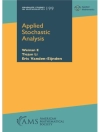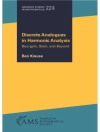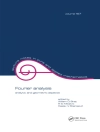Complexity increases with increasing system size in everything from organisms to organizations. The nonlinear dependence of a system’s functionality on its size, by means of an allometry relation, is argued to be a consequence of their joint dependency on complexity (information). In turn, complexity is proven to be the source of allometry and to provide a new kind of force entailed by a system‘s information gradient. Based on first principles, the scaling behavior of the probability density function is determined by the exact solution to a set of fractional differential equations. The resulting lowest order moments in system size and functionality gives rise to the empirical allometry relations. Taking examples from various topics in nature, the book is of interest to researchers in applied mathematics, as well as, investigators in the natural, social, physical and life sciences.
Contents
Complexity
Empirical allometry
Statistics, scaling and simulation
Allometry theories
Strange kinetics
Fractional probability calculus
Содержание
Table of Content:
Chapter 1: Complexity Science
1.1 It started with physics
1.2 Complexity
1.3 Measures of size
1.4 Allometry heuristics
1.5 Overview
Chapter 2: Empirical Allometry
2.1 Living networks
2.2 Physical networks
2.3 Natural history
2.4 Sociology
2.5 Summary
Chapter 3 Statistics, Scaling and Simulation
3.1 Interpreting fluctuations
3.2 Phenomenological distributions
3.3 Are ARs universal?
3.4 Summary
Chapter 4: Models & Derivations of ARs
4.1 Optimization principles
4.2 Scaling and allometry
4.3 Stochastic differential equations
4.4 Fokker-Planck equations
4.5 Summary
Chapter 5: Complex and Strange Kinetics
5.1 Fractional thinking
5.2 Fractional rate equations
5.3 Fractional Poisson process
5.4 A closer look at complexity
5.5 Recapitulation
5.6 Appendix
Chapter 6: Fractional Probability Calculus
6.1 Fractional Fokker-Planck equation
6.2 Fully fractional phase space equations
6.3 Entropy entails allometry
6.4 Statistics of allometry parameters
6.5 Discussion and conclusions
6.6 Epilogue
Об авторе
Bruce J. West, US Army Research Office, Cary, US












